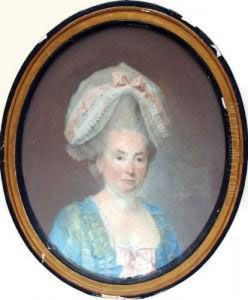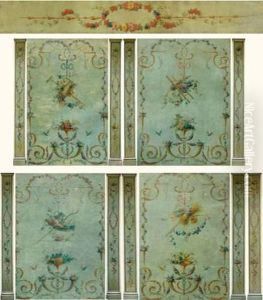Pierre Ranson Paintings
Pierre Ranson was a French artist and designer, most notably recognized for his work in the Rococo style, which was predominant in the 18th century. Born in 1736 in Paris, Ranson came from a family with deep roots in the world of design and decoration. His father, Pierre Ranson the elder, was himself a master embroiderer, which likely influenced the younger Ranson's artistic path and his appreciation for intricate detail.
Ranson was primarily known for his work as a draftsman and designer of furniture and decorative objects. He received his training under the guidance of acclaimed French artists of the time, which included attending the prestigious Royal Academy of Painting and Sculpture in Paris. His education and family background enabled him to become an adept artist in the ornamental arts, which were highly sought after by the French aristocracy and the well-to-do.
During his career, Ranson developed a distinctive style characterized by fluid lines, naturalistic floral patterns, and elaborate ornamentation, all of which were hallmarks of the Rococo aesthetic. He became a prominent figure in the French decorative arts scene, contributing designs for tapestries, wall panels, and furniture. His work was not confined to private residences; he also received commissions for royal palaces and important public buildings.
Ranson's talent was recognized by his appointment as a designer at the prestigious Manufacture des Gobelins, a historic tapestry factory in Paris. The Gobelins Manufactory was responsible for producing some of the most exquisite tapestries and furnishings for the French monarchy, and Ranson's designs played a significant role in their collection.
Despite his success, not a great deal is known about Ranson's personal life, and only a limited number of his works have survived to the present day. His legacy, however, lives on in the pieces that remain and in the influence he had on the decorative arts of the period. His style contributed to the spread of the Rococo movement across Europe and can be seen as a bridge to the later Neoclassical style.
Pierre Ranson passed away in 1786, leaving behind a body of work that continues to be appreciated for its elegance and craftsmanship. His contributions to the Rococo style have made him a notable figure for scholars and enthusiasts of 18th-century French art and design.


